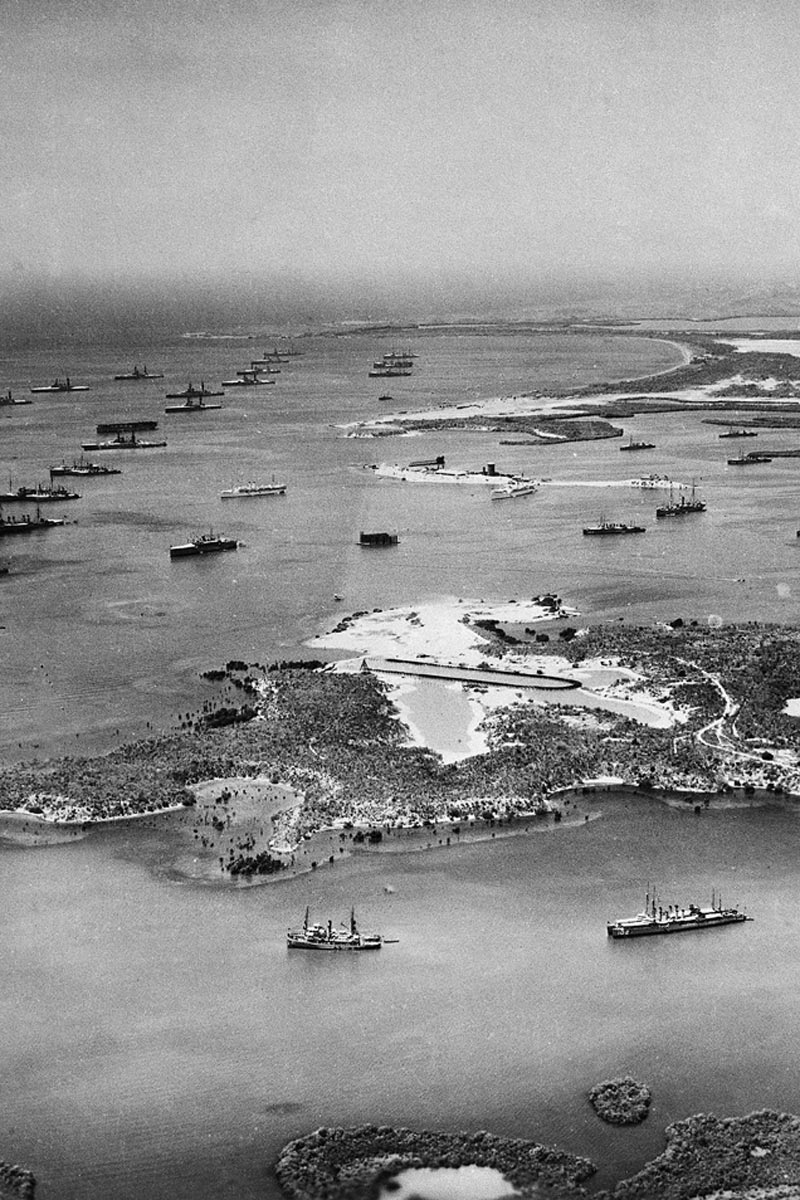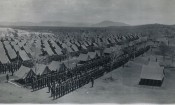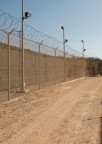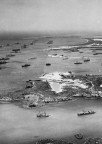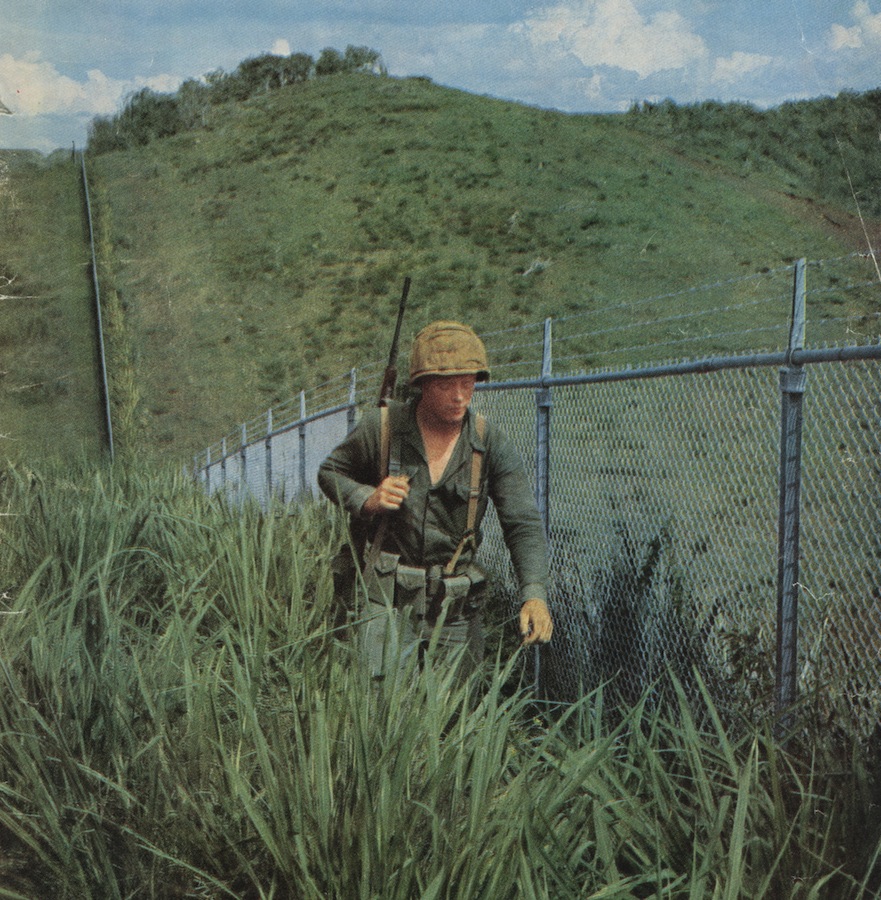
In 1953, the U.S. repaired the 17.5 mile boundary fence separating GTMO from Cuba. After diplomatic relations between Cuba and the U.S suspended in 1961, the fence became increasingly important both as a physical structure and symbol. While the fence on the panel is a good photograph, it represented more complicated issues than the simple image of a Marine patrolling it might suggest.
As a physical structure, the fence raised questions of whether it was designed to keep people in or out. Castro started building the Cactus Curtain around 1962, gradually adding more obstacles over the next few years. Journalists speculated that Castro intended to keep Cubans from defecting to the United States or seeking political asylum. Yet, Castro allowed Cuban workers to cross the fence at the North East Gate, one of only two openings in the fence. Over 3,000 Cuban workers once passed through the gate, but ever since a vehicle traffic prohibition in 1958, that number has steadily dwindled down to two, as of 2012.
As a symbol, the fence represented the ideological separation between Cuba and the U.S. As the crisis with the water plant shows, any attempts Castro made to challenge U.S. presence in Cuba met with American resistance and increased measures to ensure the security of GTMO. Indeed, when diplomatic relations broke down, President Dwight D. Eisenhower assured Americans that “the termination of our diplomatic and consular relations with Cuba has no effect on the status of our Naval Station at Guantanamo.”
- Ryan Ehrfurth and Samantha Maley, Arizona State University
As a physical structure, the fence raised questions of whether it was designed to keep people in or out. Castro started building the Cactus Curtain around 1962, gradually adding more obstacles over the next few years. Journalists speculated that Castro intended to keep Cubans from defecting to the United States or seeking political asylum. Yet, Castro allowed Cuban workers to cross the fence at the North East Gate, one of only two openings in the fence. Over 3,000 Cuban workers once passed through the gate, but ever since a vehicle traffic prohibition in 1958, that number has steadily dwindled down to two, as of 2012.
As a symbol, the fence represented the ideological separation between Cuba and the U.S. As the crisis with the water plant shows, any attempts Castro made to challenge U.S. presence in Cuba met with American resistance and increased measures to ensure the security of GTMO. Indeed, when diplomatic relations broke down, President Dwight D. Eisenhower assured Americans that “the termination of our diplomatic and consular relations with Cuba has no effect on the status of our Naval Station at Guantanamo.”
- Ryan Ehrfurth and Samantha Maley, Arizona State University
